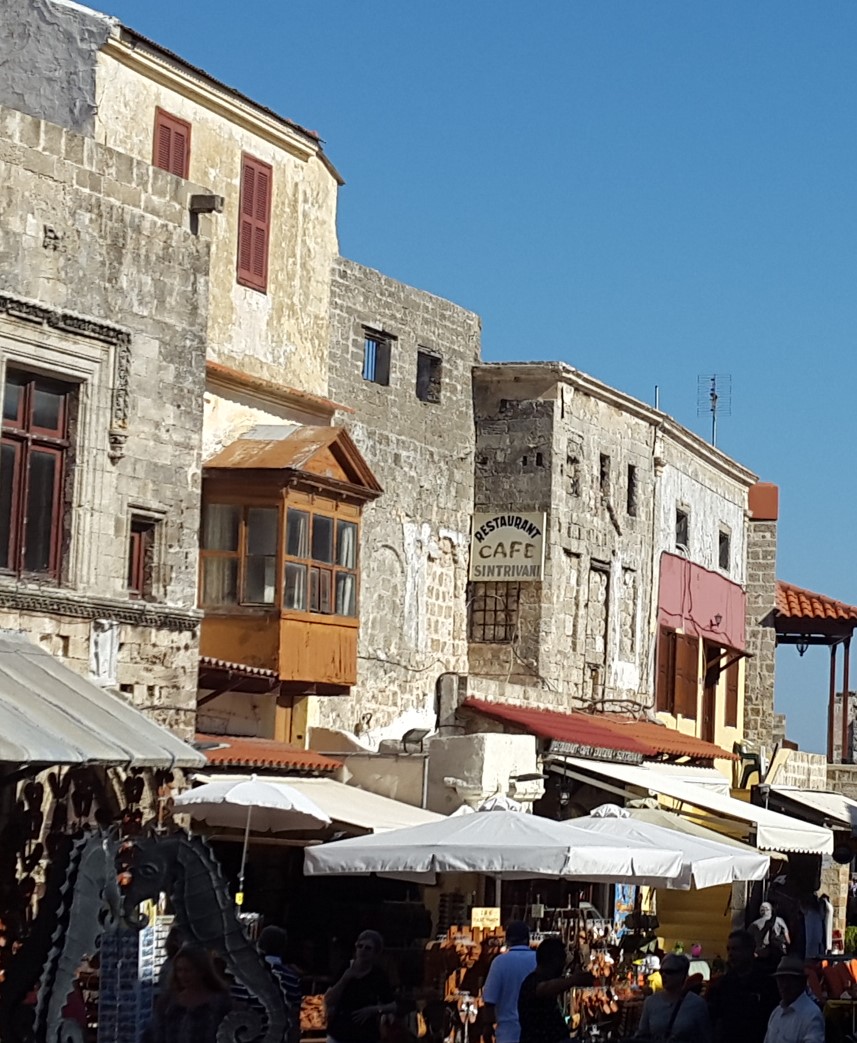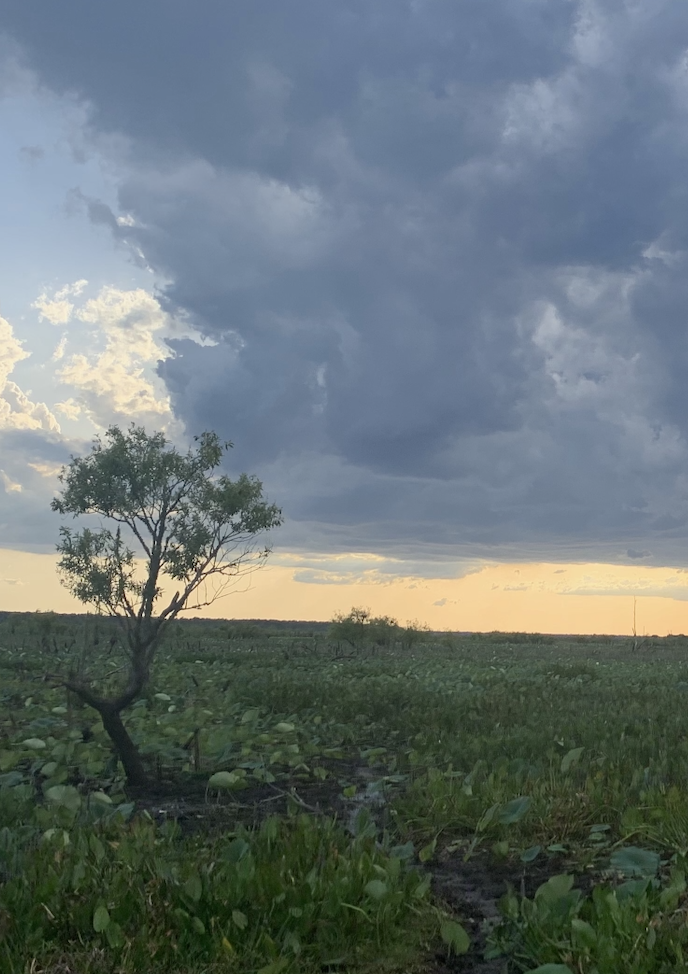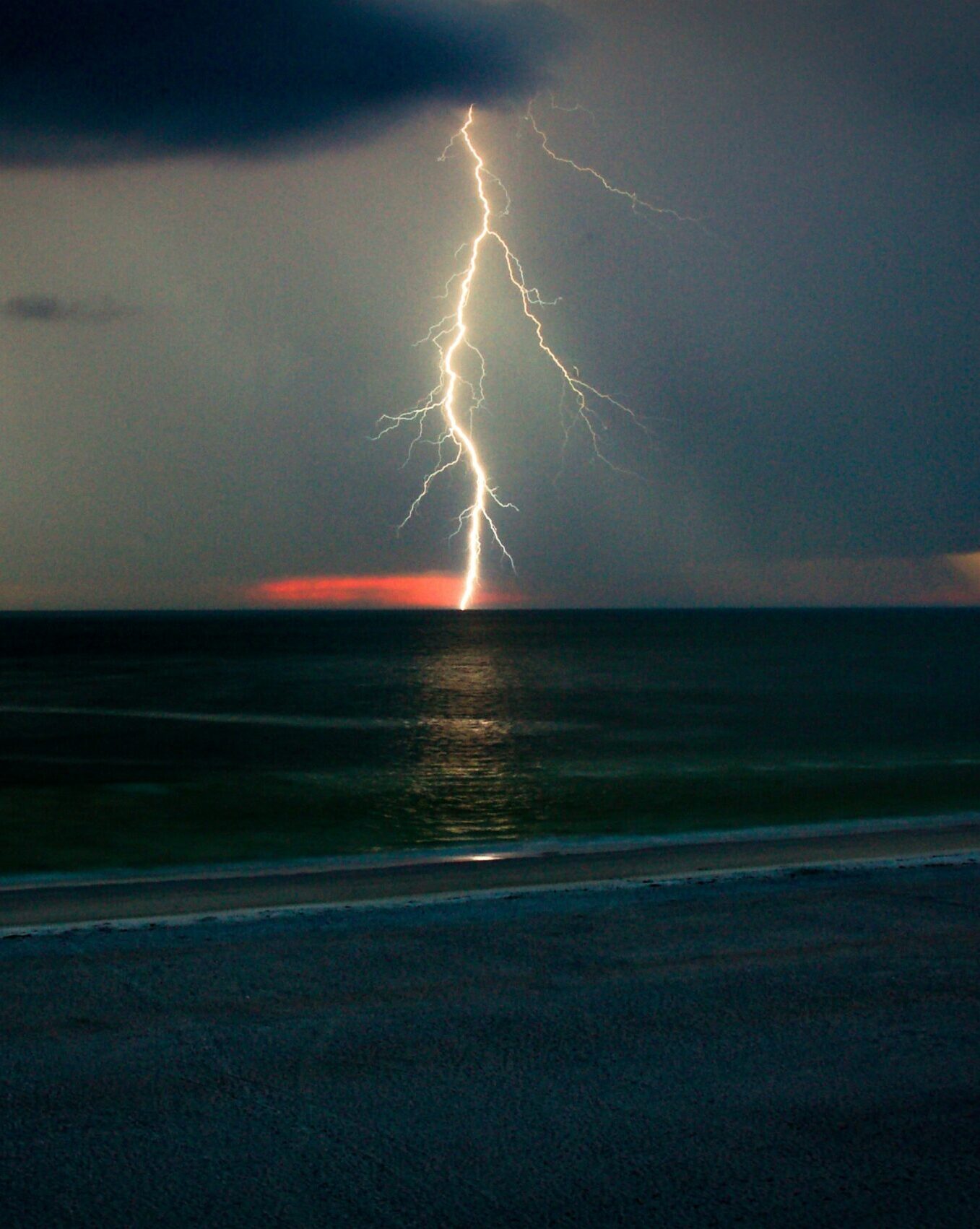
Rhodes, Greece
At the Mandraki I saw three medieval windmills standing on the pier like heavy friars with their brownish cloaks, also the statues of two Rhodian fallow deer, a buck and a doe, symbols of the island. A theory persists that Crusaders brought deer to the island because their antlers secrete an alkali substance that repels snakes. Standing at the marina I gazed at the platoni, which are smaller than other types of deer, reaching only one meter in height. Their brown coats acquire white mottles in summer, while in winter they darken. Rhodes’s ancient name was Ophiusa, which in old Greek means a place filled with snakes. “That’s why you see cats everywhere,” one of the islanders told me. “They are the guardians of the island. They kill the snakes.”
The walls of the medieval town rose a few meters to my right as I bordered Rimini Square. I walked over a section of the dried moat then stopped: Eleftheria’s Gate stood before me, the entrance to a fortress that had seen hundreds of ships arrive to the harbor and empty their bowels of Roman and Byzantine soldiers alike, Crusaders on horses swinging their blades, turbaned men climbing up walls.
I entered Symi’s Square and saw the Museum of Modern Greek Art building, the violet bougainvilleas adorning the staircase of the Library of the Archeological Institute on Argyrokastrou Square. I walked past the Auvergne Inn where people in short-sleeved shirts sat outside and listened to live music. An old ficus tree stood in the middle of the courtyard, its leaves rustling in the breeze. I walked on Odos ton Ippoton, the Street of the Knights, and admired the Hospital of the Knights, the Inns that belonged to the different tongues of the Order of Saint John: Italy, France, Spain, Provence, until I reached the Palace of the Grand Master, with its colossal towers, their turrets the shape of giant jigsawed teeth. At eleven there was no one in sight. Only the cats watched me, curled up on top of the trash bins. Their heads turned as I walked past them.

I walked up the hill and onto Diakou Street where I bought a pita bread filled with Haloumi cheese. I saw people sitting outside tavernas drinking beer and stubbing out cigarettes. This was the autumn of 2018. The smell of gyros and garlic covered my face as I walked past streets whose names I wanted to remember and later come back to: Amerikis, Makariou, Theodoraki.
I returned to the International Writers and Translators Center, IWTC, where I’d stay for three weeks. The IWTC is a two story building with half of its construction dating from the late Ottoman Empire years (end of the 19th century), the other from the Italian occupation years (early 20th century). Painted in red and with wooden shutters in blue, the Center stands on a hill overlooking lines of aloe cacti leading down to the sea. In the distance lies the rugged coastline of Turkey. A brass plaque by the main entrance reads: Nikos Kasdaglis House, with a line in Greek that conveys the inner journey every writer must go through to abandon the self in order to create art.

Nikos Kasdaglis was born in 1928 on the neighboring island of Kos but moved to Rhodes when he was five (on April 23rd, 1933, a devastating earthquake leveled most of the buildings on Kos). Those were the years of the Italian occupation and in 1937 his family moved to Athens to secure an education for him in Greek, but Kasdaglis returned to Rhodes in 1946. In the summer of 1971, during the years of the military junta, Nobel-prize winning poet George Seferis visited Rhodes for only one day; he wanted to see the Monastery of Filerimos and the ancient Dorian fountain. “It’s considered to be the best preserved fountain of its time, dating back to the 6th century B.C.,” he wrote in his journal. Kasdaglis drove him to Filerimos and they walked down the ravine, gazed at the bays of Ixia and Trianda before reaching the ancient fountain.
On my last day in Rhodes I went to Filerimos. I wanted to see what Kasdaglis and Seferis had seen. At the monastery’s door I encountered a man selling souvenirs and asked him about the fountain. “It’s closed,” he said. “It’s been closed for twenty years. But here, have a look.” He handed me a postcard. I gazed at the fountain for a long time, then walked toward a wooden gate and wire fence; the beginning of a descending stone path became visible. A crow squawked overhead. Under the shade of a cypress, a male peacock watched me.
Seferis died a few weeks after his visit to Filerimos, on the 20th of September 1971, but his words have remained:
Flowers of the rock facing the green sea
with veins that reminded me of other loves
I’ve loved these stones as long as I was able
These stones, my fate
A. Mauricio Ruiz is a Mexican writer who’s lived in Belgium, Norway, and the US. His work has appeared in Words Without Borders, Catapult, The Common, The Rumpus, Electric Literature, JMWW, River Teeth, Literal Magazine, among others. He’s been shortlisted for the Bridport and Fish prizes, and received fellowships from OMI writers (NY), Société des auteurs (Belgium), Jakob Sande (Norway), Can Serrat (Spain), and the Three Seas’ Council (Rhodes). His second collection of stories was published in 2017, and his work has partially been translated into French and Dutch.
Photos by author.




